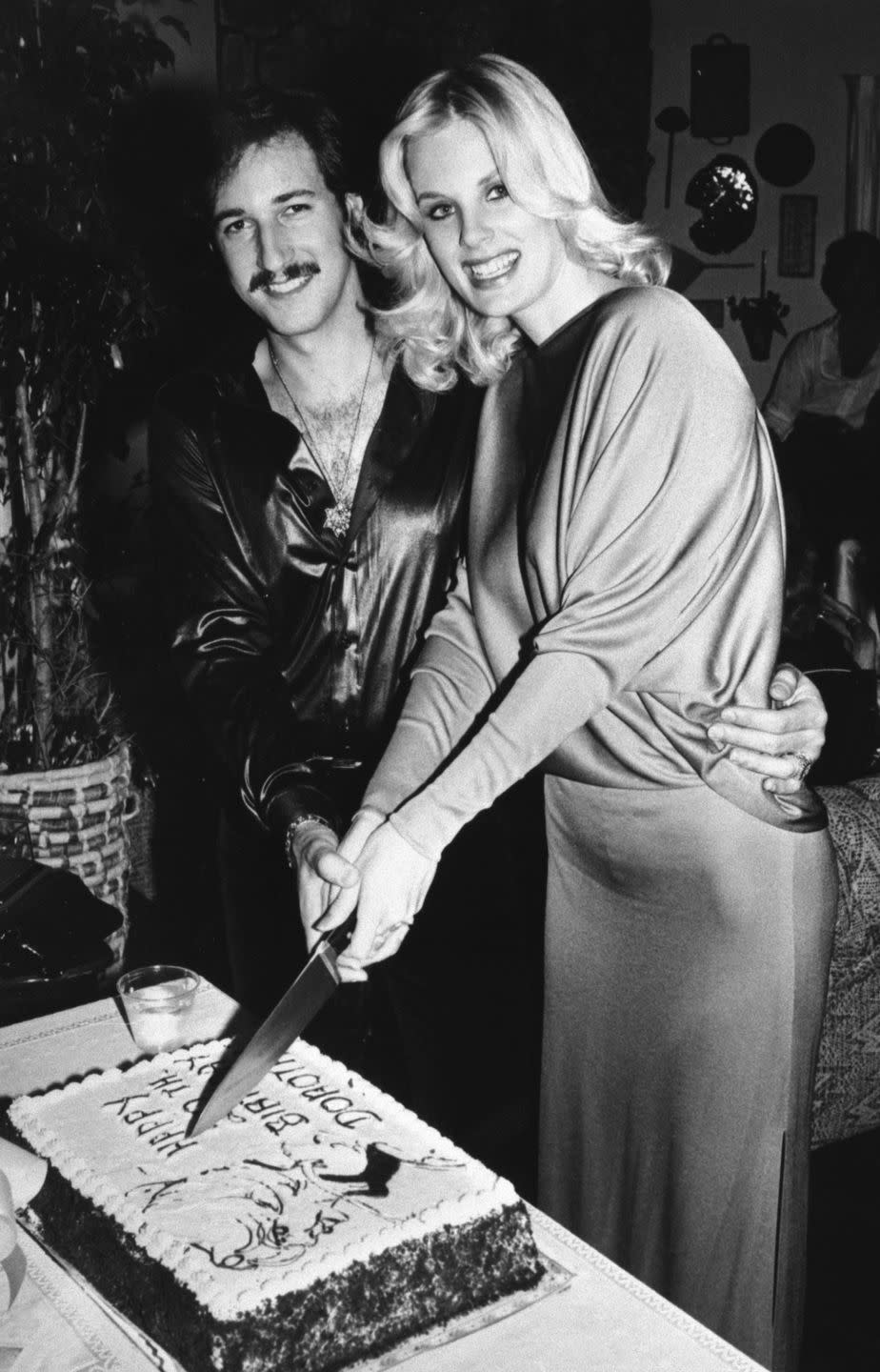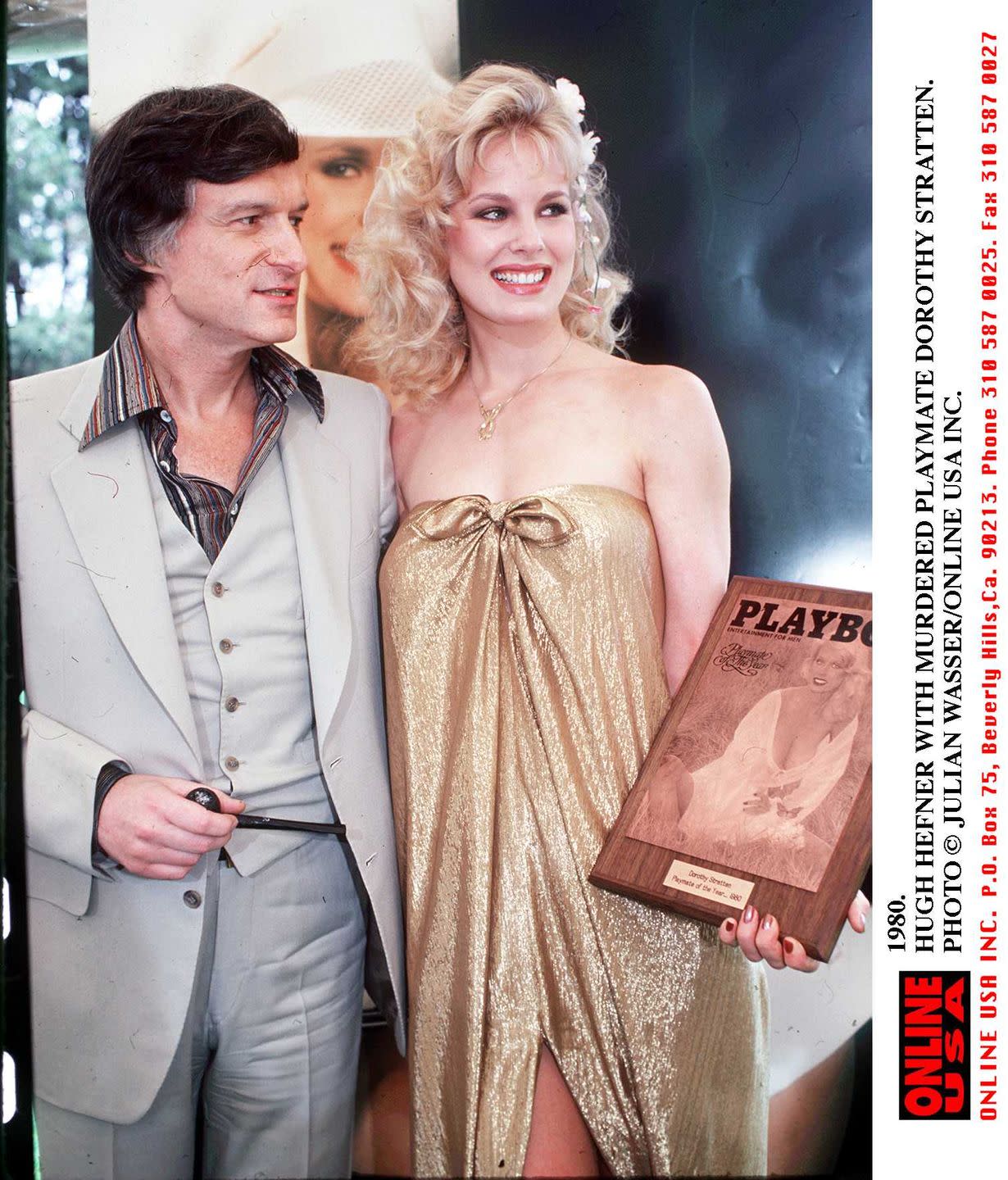The True Story of Dorothy Stratten Is Just as Tragic as It’s Portrayed as on ‘Welcome to Chippendales'

Welcome to Chippendales, streaming now on Hulu, details the almost-too-wild-to-believe founding of the male strip club empire. Created by Indian immigrant Somen "Steve" Banerjee in 1979, Chippendales became a phenomenon, spawning several locations and global tours. But Banerjee's success story soured in 1994, when he was indicted and later convicted of racketeering, including hiring a hitman to murder his business partner, Nick De Noia.
Banerjee's murder-for-hire plot isn't the only crime surrounding the Chippendales empire, though. Playboy Playmate Dorothy Stratten was killed by her estranged husband (and Chippendales ideator) Paul Snider in 1980. In Welcome to Chippendales, Stratten is played by Bates Motel star Nicola Peltz Beckham. Peltz Beckham appeared in A&E's Psycho prequel from 2013 to 2015. Now, she's taking on the role of the ill-fated centerfold.
Stratten died at just 20 years old, but she managed to make her mark on Hollywood—and the world. She appeared on magazine covers, graced the silver screen, and inspired songs, books, and films for decades to come.
Before appearing in Playboy, she worked at a Dairy Queen.
While attending high school, Stratten served ice cream in her hometown of Vancouver, Canada. In 1977, she met Snider, a local pimp and small-time hustler, after he visited the dessert joint. He was 26, she was 18.
Stratten and Snider began dating and by 1978, he persuaded her to pose for nude photographs, eventually sending them to Playboy. At the time, the magazine was searching for its 25th Anniversary Playmate.
Stratten was admittedly hesitant, having struggled with shyness. In a 1980 interview with Tonight Show host Johnny Carson, Stratten discussed how she had been teased in her youth. She was made fun of for her lanky frame and full lips, which later became known as two of her most striking features.
After Stratten's photos caught the attention of Hugh Hefner, she became a finalist in Playboy's "Great Playmate Hunt" of 1978. She was flown out to Los Angeles to visit the Playboy Mansion and complete a test shoot—it was her first time on a plane.
Stratten Became Miss August 1979.
The 25th Anniversary Playmate title ended up going to Stratten's colleague, Candy Loving, but this didn't stop Stratten from making the pages of Playboy.
Just two months before her pictorial's release, Stratten married Snider, much to the dismay of her social circle. Those around Stratten were aware of Snider's sleazy antics, and it wasn't long before he was ostracized by the glitzy group at the Mansion.

In the meantime, Stratten picked up a job at the Los Angeles Playboy Club. Due to her age, Stratten couldn't serve alcohol. Instead, she began working as a hostess, known as a "door Bunny," at the Century City establishment.
Stratten came up with the iconic Chippendales uniform.
It was a 1979 meeting with Snider that gave Banerjee the idea of creating Chippendales. Four years earlier, Banerjee purchased a failing Los Angeles disco with the hopes of spinning it into a local hotspot.
As a pimp and nightclub promoter, Snider was well-versed in the business of exotic dancing. He suggested that Banerjee host a male strip night at his club, and as they say, a star Chippendales was born.
For her part, Stratten also played a key role in the inception of Chippendales. She conceived of the collar and cuffs look still worn by Chippendales dancers today.
Stratten Became Playmate of the Year in 1980.
The coveted title came with a bunch of luxe prizes: Stratten took home a $25,000 check, along with a fur coat and a shiny new Jaguar.

Covering Playboy was hardly Stratten's peak, though. As early as 1979, she began a short-lived acting career, appearing in episodes of Fantasy Island and Buck Rogers. She starred in her first feature film—a sci-fi B movie called Galaxina—in 1980.
Becoming an actress wasn't always in the cards for Stratten, but Hefner, who sought the acceptance of Hollywood's most importan people, pushed his prized Playmate into the spotlight.
Stratten was called the next Marilyn Monroe, and unfortunately, time would soon reveal how strikingly similar they were. Both of the women met tragic ends, and Stratten's final resting place would be the same cemetery where Monroe is buried.
Stratten was murdered just months after becoming Playmate of the Year.
In March 1980, production began on what would be Stratten's final film. She was cast alongside Audrey Hepburn in Peter Bogdanovich's romantic comedy They All Laughed. It was Stratten's first big-budget film role: she played Dolores Martin, whose jealous husband hires a private investigator to spy on her.
Meanwhile, Stratten's marriage to Snider was crumbling. He grew increasingly controlling of Stratten, and as her manager, he demanded complete oversight of her finances. Snider, who saw Stratten as his ticket to fame, became obsessed with making her a star.
Stratten first met Bogdanovich at the Playboy Mansion in January 1980. He was immediately captivated by her, and while filming They All Laughed, they struck up an affair.
In June of that year, Stratten wrote Snider with her intention to separate from him. Around the same time, Snider caught wind of Stratten's relationship with Bogdanovich—in a coincidental twist of fate, he even hired a private investigator to follow her.
Two months later, Stratten met with Snider for the last time. Stratten arrived at the home she used to share with him in order to finalize their divorce settlement. Within hours, Snider shot and killed Stratten, then himself.
The shocking murder-suicide captured the media's attention, and suddenly Stratten's legacy was reduced to gruesome rubble. They All Laughed was released posthumously in 1981.
Stratten's life story inspired movies, books, and songs.
Bogdanovich wrote a biography of Stratten called The Killing of the Unicorn, released in 1984, which also detailed their affair. In the book, Bogdanovich criticized Playboy and Hefner, who he partially blamed for Stratten's demise. Within four years, Bogdanovich married Stratten's younger sister, Louise.
Two notable biopics about Stratten were released in 1981, and 1983, respectively. The first was a made-for-television movie, Death of a Centerfold, which starred Jamie Lee Curtis. Bob Fosse later directed Mariel Hemingway in Star 80.
Stratten is also immortalized in songs by Bryan Adams ("The Best is Yet to Come"), the Red Hot Chili Peppers ("Californication"), and Prism ("Cover Girl").
Like many starlets past and present, Stratten was used by the men around her as a tool in their personal gain. What they could never own, though, was Stratten's promising talent and charming demeanor.
Stratten also had a knack for poetry. One of her 1979 verses is an eerie reminder of the emptiness of fame:
...To live in this heaven,
This Disneyland
Where people are the games.
You Might Also Like
